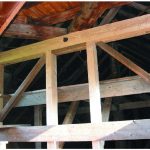Dealing with sewage backup or overflow is a homeowner’s nightmare, posing serious health risks and requiring immediate attention. Whether caused by a clogged sewer line, a malfunctioning septic system, or heavy rainfall overwhelming drainage systems, Sewage cleanup demands careful handling and proper sanitation to protect both property and occupants. Understanding essential tips and techniques for a safe and effective cleanup process is crucial for restoring a healthy home environment after a sewage-related incident.
Safety should always be the top priority when dealing with sewage cleanup. Raw sewage contains a plethora of harmful pathogens, including bacteria, viruses, and parasites, which can pose severe health risks if ingested or inhaled. Before beginning any cleanup efforts, it’s essential to don personal protective equipment (PPE) such as gloves, goggles, and face masks to minimize exposure to contaminants.
The first step in sewage cleanup is to stop the source of the sewage flow, whether it’s a blocked toilet, a broken sewer pipe, or a malfunctioning septic tank. Shut off the main water supply to prevent further flooding, and if necessary, contact a professional plumber or sewage cleanup specialist to address the underlying issue.
Once the source of the sewage backup has been addressed, the next step is to remove standing water and sewage from the affected area. This may require the use of pumps, wet-dry vacuums, or buckets to extract the contaminated water. It’s essential to dispose of sewage-contaminated water properly and in accordance with local regulations to prevent further contamination of the environment.
After removing standing water, thoroughly clean and disinfect all surfaces and materials that came into contact with sewage. Use a mixture of hot water and detergent to scrub surfaces, followed by a solution of bleach and water (one cup of bleach per gallon of water) to disinfect and kill any remaining pathogens. Pay close attention to areas such as floors, walls, baseboards, and fixtures, as well as any furniture or belongings that may have been affected by sewage backup.
In cases of extensive sewage contamination or damage to porous materials such as drywall or carpeting, it may be necessary to remove and replace affected materials to prevent mold growth and ensure thorough sanitation. Dispose of contaminated materials properly and seal them in plastic bags to prevent further spread of contaminants.
After completing the cleanup process, thoroughly ventilate the area to allow for proper drying and airflow, which helps prevent mold growth and dissipates any lingering odors. Use fans, dehumidifiers, and open windows to facilitate the drying process and promote air circulation.
Finally, monitor the affected area closely for signs of mold growth, water damage, or recurring sewage issues in the days and weeks following cleanup. If mold growth or water damage persists, or if sewage backup recurs, it may be necessary to seek professional assistance to address underlying issues and prevent further damage to the home.
In conclusion, navigating sewage cleanup requires careful planning, proper safety precautions, and thorough sanitation to ensure a safe and healthy home environment. By following essential tips and techniques for sewage cleanup, homeowners can effectively address sewage-related incidents and minimize the risk of exposure to harmful contaminants. Prompt action, proper sanitation, and vigilant monitoring are key to restoring a clean and safe living space after a sewage backup or overflow.









